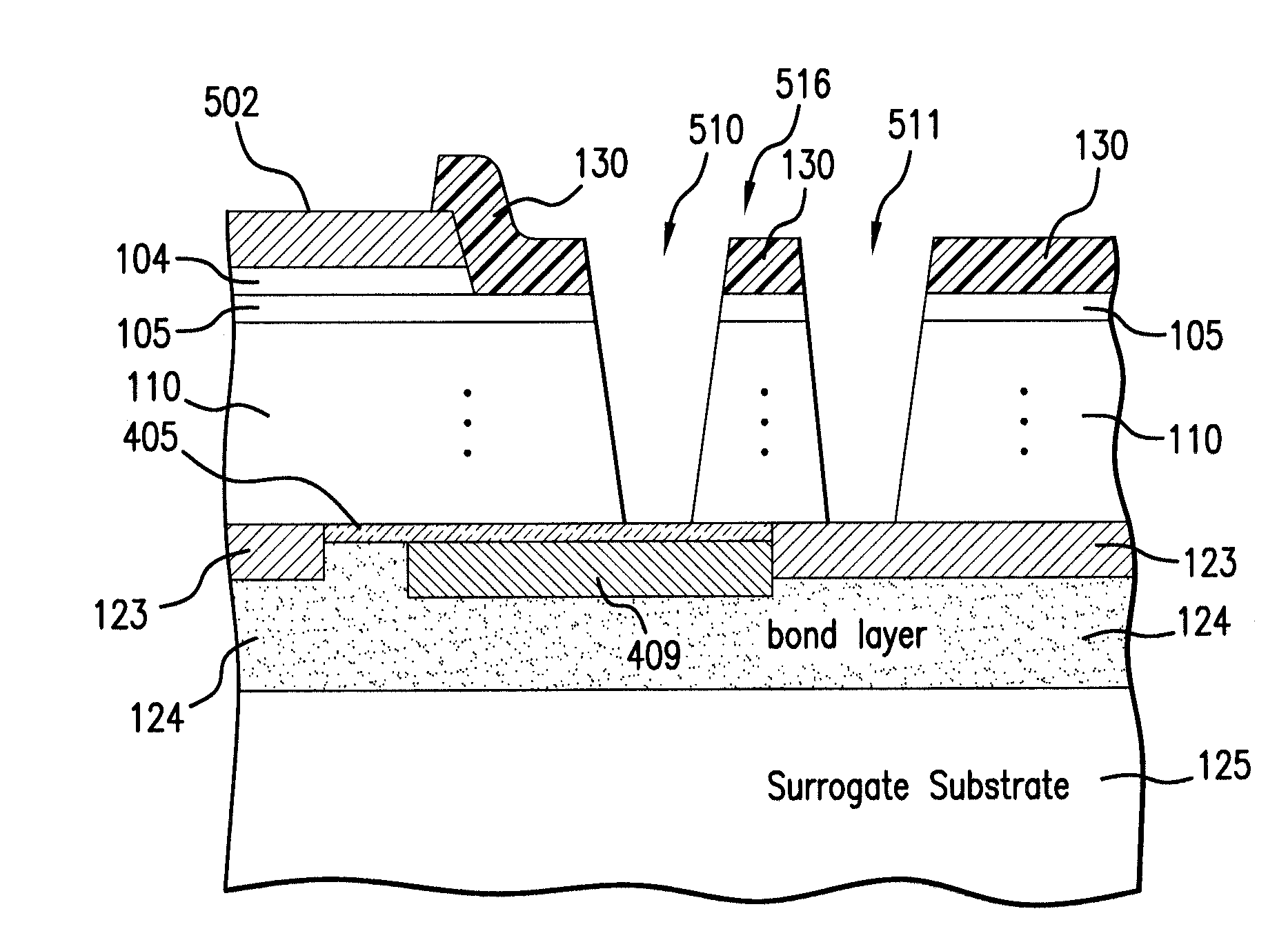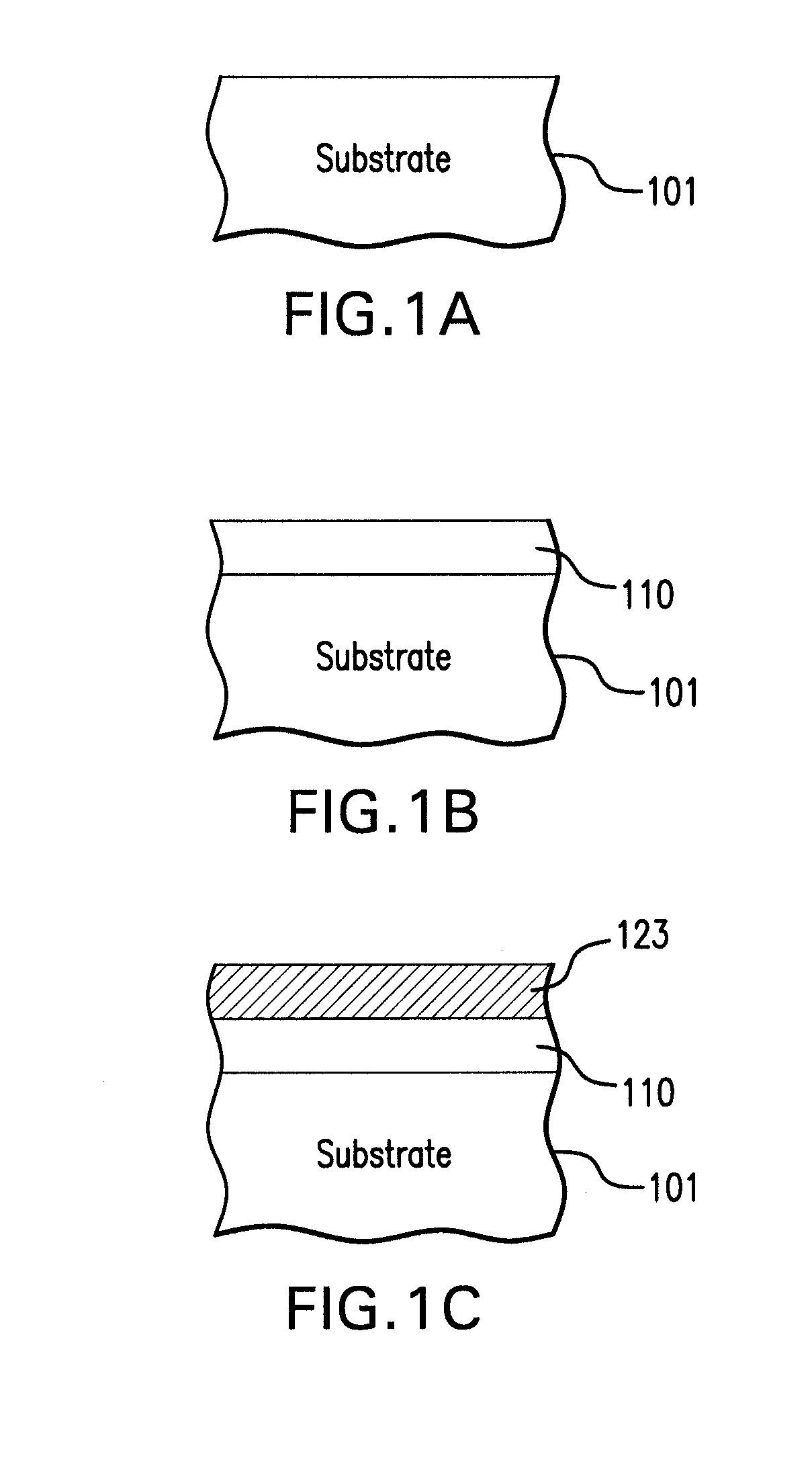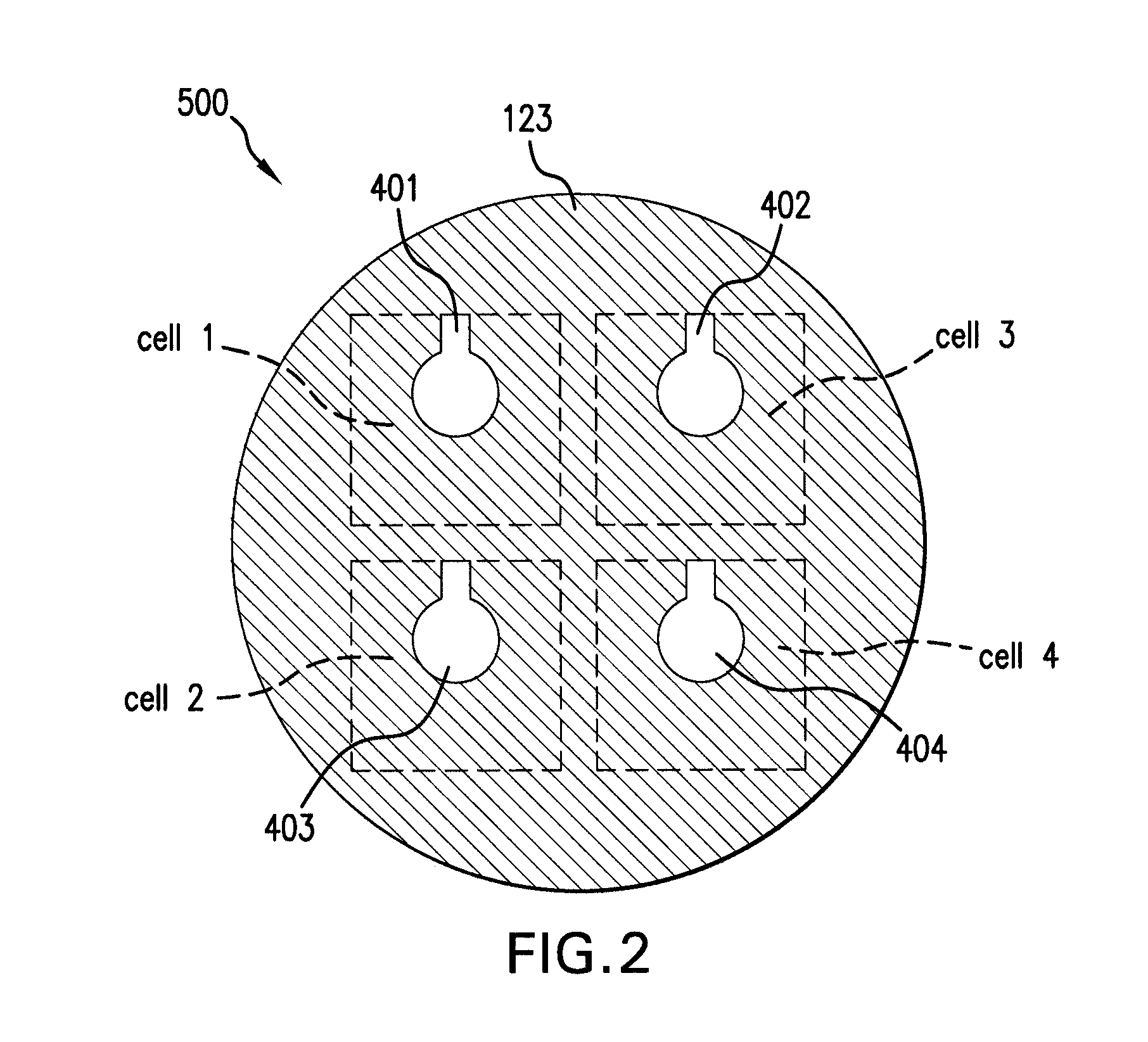Inverted Metamorphic Multijunction Solar Cells with Back Contacts
a solar cell and metamorphic technology, applied in the field of semi-conductor-based solar cells, can solve the problems of difficult electrical interconnection through standard bonding of wires, such as kovar® wires, and entail a rather complex manufacturing process, and achieve the effects of less costly, secure and robust electrical interconnection, and convenient performan
- Summary
- Abstract
- Description
- Claims
- Application Information
AI Technical Summary
Benefits of technology
Problems solved by technology
Method used
Image
Examples
Embodiment Construction
[0053]FIG. 1A is a partial cross-sectional view illustrating a first step of a method for manufacturing a semiconductor-based solar cell, according to an embodiment of the present invention. A first substrate 101 is provided, which can be a semiconductor wafer, for example a GaAs wafer, or any other suitable growth substrate made of a semiconductor material, such as of Ge, InP or GaAs or of other suitable material. With reference to FIG. 1B, a plurality of semiconductor layers are sequentially deposited on substrate 101, which are collectively indicated with referral number 110 and referred to as the semiconductor body. The semiconductor layers comprise for example binary, ternary and / or quaternary alloys of III-V semiconductors (details of the semiconductor layers are not illustrated in the figures). The plurality of semiconductor layers 110 will constitute the absorption portion of the cell, in which the absorption of the sun light takes place.
[0054]In a preferred embodiment, the ...
PUM
 Login to View More
Login to View More Abstract
Description
Claims
Application Information
 Login to View More
Login to View More - R&D
- Intellectual Property
- Life Sciences
- Materials
- Tech Scout
- Unparalleled Data Quality
- Higher Quality Content
- 60% Fewer Hallucinations
Browse by: Latest US Patents, China's latest patents, Technical Efficacy Thesaurus, Application Domain, Technology Topic, Popular Technical Reports.
© 2025 PatSnap. All rights reserved.Legal|Privacy policy|Modern Slavery Act Transparency Statement|Sitemap|About US| Contact US: help@patsnap.com



